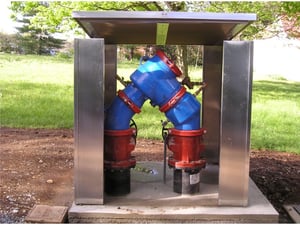
You may not know that the U.S. government does not mandate a national backflow prevention program. The EPA, the agency responsible for protecting all of our natural resources, does not enforce a cross-connection control program anywhere in the country. If you find it hard to believe that the United States does not enforce the protection of its most precious natural resource, water, then you are not alone.
The EPA does “recommend” that municipalities have some type of backflow prevention program, but they leave it up to the states to determine what those programs are and how they are enforced. As you can imagine, the programs and enforcement levels vary wildly from state to state.
Recently, Utah implemented a state-wide cross-connection control program, and it is a fine example to follow. The program is comprehensive, has clear guidelines and requires certified technicians to implement and enforce the program. Here are the five keys to the Utah state cross-connection control (CCC) program:
Local Authority – Each municipality must have an ordinance, by-law or some other type of legal provision that authorizes them to enforce a CCC program.
Public Awareness – The public (water users) must be provided with educational materials or information about what CCC is and how the municipality is going to provide and enforce the program.
Trained Staff – All technicians of the CCC program must be trained and certified. There are different requirements depending on the size of the municipality, but everyone involved must be a certified technician.
Record-Keeping – Each CCC program must provide detailed information and record-keeping concerning every backflow preventer and potential cross-connection within the entire municipality.
Ongoing Enforcement – Testing and maintenance of the CCC program must have an authorized administrator who keeps the entire program on a regular schedule. A CCC program is only as effective as its regular enforcement.
The statewide cross-connection control program in Utah is an excellent example of a state-enforced backflow prevention program. It has clear guidelines and provides the necessary tools for municipalities of any size to implement an effective program. The EPA has needed a federal CCC program for decades but instead has left it up to the states to protect their environmental assets. Utah has a good program to imitate.




